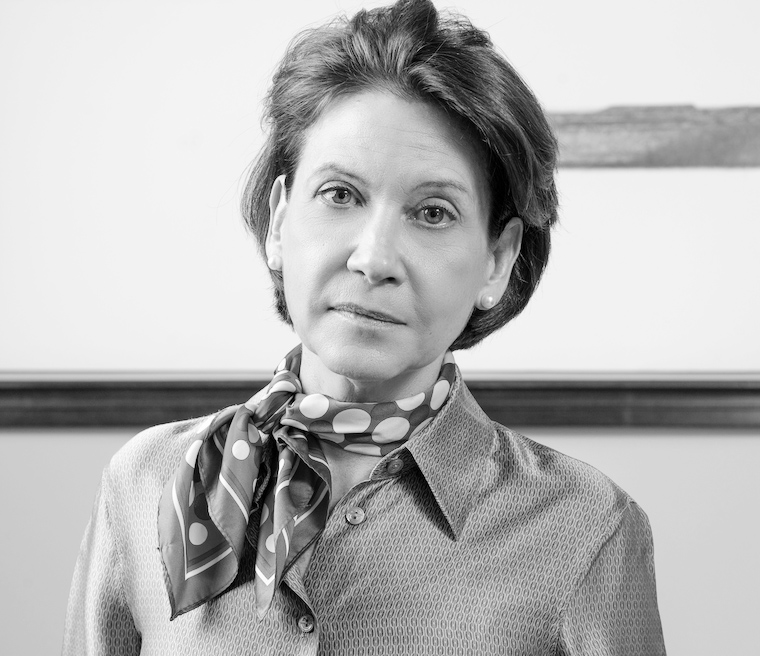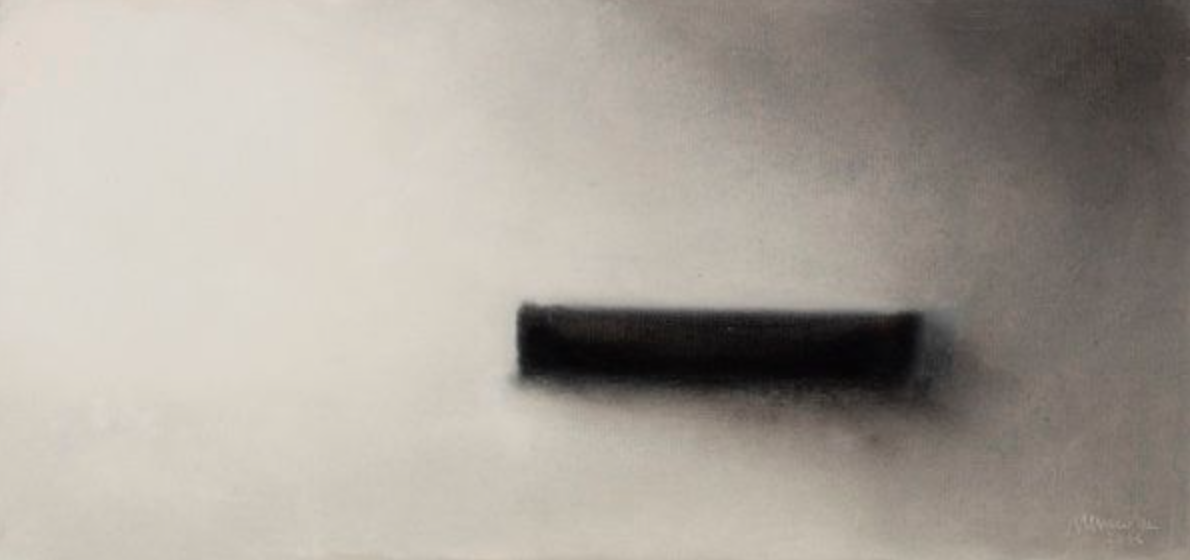interviews
Interview with Valeria Navarro. Responsible for the Navarro Vives Archive
"L'Arxiu vol recollir i compilar el llegat de Navarro, i en la mesura que sigui possible, col·laborar a una relectura de tota una generació d'artistes, potser menys estudiats, fonamentals per al desenvolupament de l'art català de mitjan segle XX"

For years Valeria Navarro has worked tirelessly with a single goal: to give visibility to the career of the painter Josep Navarro Vives. With the tenacity and careful demand for respect for the work and the work of a lifetime, that of her father, Valeria Navarro has launched the Josep Navarro Vives Archive . The project, which starts from the private initiative, is not only aimed at the recovery, documentation, cataloging and conservation of the artistic production of the painter Josep Navarro Vives, but also works for the dissemination of its results among the artistic community with aim to promote Navarro's work, and rescue a generation of Catalan artists who, during the second half of the 20th century, were overshadowed by the great figures of Catalan informalism. The figure of Josep Navarro is, we could say, the key to the many stories still to be discovered of Catalan art and which forces us to look closely at other authors who went unnoticed in the elaboration of the great stories but which close, in themselves, the micro-history of an era, what went unnoticed and which, without a doubt, must help us complete the story of an artistic panorama that reveals itself to be richer and more complex the wider and more varied it is it is his representation.

How and when did the Navarro Lives Archive emerge, what anxiety motivated the launch of this project?
In 2010 I realized the need to prepare a reasoned catalog of the work of Josep Navarro Vives as a basic instrument that would allow me to carry out other projects that I had underway such as academic studies, exhibitions, catalogues, etc. The idea of generating a structure, then still undefined, that would bring together the work of Navarro Vives will gradually take shape and, naturally, the project of creating the Josep Navarro Vives Archive, which is the meeting point of all these existing and future initiatives. I called it "Archive" to reflect, on the one hand, the non-commercial dimension of my approach and, on the other, its founding logic which is none other than that of sharing everything related to Navarro's career. The first concrete action of this approach was the creation of the website www.archivenv.org. From here, we have continued to work tirelessly during the last almost ten years with the aim of gathering an important documentary base that would be of interest and use to researchers, students, critics or the general public, interested in discovering the work of the artist. I understand the archive as an open place where everything related to Navarro's creation, life and creative and artistic context converges. At the same time, the archive is designed to be a space open to all those who want to know more about my father's work. Our main motivation is not only to collect and compile the legacy of Josep Navarro Vives, but to create a space in which to contextualize his work and that this space also serves, as far as possible, for a re-reading of an era and of a whole generation of artists, perhaps less studied, but who, nevertheless, have been fundamental to the development of Catalan art in the middle of the 20th century.

The launch of a project of this magnitude involves the mobilization of a significant number of personal and material resources, in addition to the investment of time and the emotional stake that entails any review of a past, as recent as it is the father's work. What challenges have been encountered during these years?
It is a challenge that requires significant dedication. In fact, it is the work of a lifetime, as the project grows as it progresses. The starting point was my conviction that it was worth knowing more about Navarro's work. As the artist's daughter, my certainty is based on an intimate and unique knowledge of the entire production. This advantage, however, had to be compensated by distancing myself from the work and the artist, in order to remain, at the same time, objective and aware of its limits. At first it was a solitary endeavor that involved many hours of dedication and work. Over the years I collected thousands of photographs, catalog proofs, personal correspondence, certificates of authenticity, etc. which right now make up an ordered and cataloged record of almost 2000 works that grows day by day. In addition, in recent months we have carried out the digitization of catalogues, photographs, press clippings, among many other documents, which range from the 1950s to the present day. Over time, however, I have discovered that my efforts have been rewarded by stimulating encounters with curators, gallerists or collectors, who have confirmed the value of my project and the interest in Navarro's work.
Compilation is also an important revision exercise. What have you discovered in this process of the work of Josep Navarro Vives?
It is a process in which one has to pull the thread to locate as many works as possible. The challenge is to recompose the production carried out throughout the artist's career; in this case we are talking about seventy years of creation. It is necessary to follow the trace of a painting from the starting point to the present day. This is a real challenge. In addition, we must not forget that, in the case of Navarro, there is an interesting factor, but that complicates the follow-up and this is that, due to his extensive international trajectory of exhibitions in several countries and cities Europe, USA and Latin America, the search is done on a global scale. In this project I have discovered two fundamental things to understand the work we do in the archive and which are the restlessness that motivates us. On the one hand, the compilation and digitization of bibliographic and artistic works allows us to reconstruct the artistic scene of Catalonia. In this way, we make use of Navarro's work and its impact on the exhibition circuit of the time, without ever losing sight of the importance that this documentation also has for understanding the relationships and implications with a whole generation of artists in a certain historical and political moment. On the other hand, we believe that it is important to spread and give visibility to Navarro's career, like that of so many other artists, who complete the story of the history of art in our country. In this sense, the Josep Navarro Archive is our bet and is open to everyone who needs it.

Because of your professional background, what differences do you find at the local state level compared to the treatment of legacies/archives of other artists managed in the Anglo-Saxon or Francophone context?
It is true that due to my professional experience I have been in contact with other forms of artistic and heritage management. I studied Art History in Barcelona and Bordeaux. I attended courses at "l'Ecole du Louvre" and worked for several years in Paris at the Tajan auction house. Then I spent eleven years in Venice, at the Contini Art Gallery. In France I was able to appreciate the great value that the country places on its cultural heritage. And not only to monuments, but to historians, painters, gallery owners, etc. An example that comes to mind is the activity of the Institut National d'Histoire de l'Art. I was also impressed by the level of professionals in the art world. I arrived in Paris alone "with my suitcase", and France gave me a professional opportunity based on my abilities, not my name or contacts. I left because I had no opportunities to find a job in Spain. Through my husband, I discovered the American world which opened my eyes to a way of working that was still different from what I had experienced in Europe: a very pragmatic and meritocratic approach. In particular, I discovered the strength that American positivity gives you, to believe that "the sky is the limit" if you work hard. This spirit of "come, try, nothing happens and if it doesn't work there are always new ideas". This spirit was eye-opening to release the energy of motivation and desire to take on challenges without fear. It is a stark contrast to the somewhat defeatist spirit into which Europe sometimes seems to fall.
We could say that Josep Navarro Vives is part of a generation of Catalan artists perhaps not sufficiently recognized at the national level, but who, nevertheless, had a very prominent international projection. A void and a lack of recognition towards a generation that museums like the MACBA or the MNAC are trying to revert to recent programming. Do you think the time has come for a true revision of the history of Catalan art?
I share this opinion and it is one of my main motivations. In fact, there is a whole series of post-war Spanish painters, among them Navarro, who went quite unnoticed by the art critics of their time and their generation. The fact that the Museu Nacional de Catalunya (MNAC) has recently included three of Navarro's works in its collection and in its book, "Second Avantguardes" by Àlex Mitrani, is an encouraging sign for this rediscovery. This interest that arises from wanting to know and look at what was being done beyond informalism, also represents an important research potential for young people and new generations of researchers and art historians. Yes, I think the time has come to rethink and rediscover the artists who played a valuable role in the history of Catalan and Spanish art.

Josep Navarro died in April and the displays of affection and recognition for his work and his lifelong career multiplied. Many advocated and demanded attention to a generation of artists, of which Navarro was part, who contributed decisively to Catalan art, but who enjoyed less visibility. In this claim, and in the face of this new stage that is opening, what role does the Josep Navarro Vives Archive want to play?
In those difficult times, it struck me that the tokens of affection and recognition I received highlighted the word "create" and made continuous references that Navarro "didn't stop creating." The inexhaustible "creativity" of Navarro, my father, was always present in the countless displays of affection. The generation of artists that my father was part of suffered, for a long time, from a lack of visibility and recognition that they undoubtedly deserved. Personally, I would like to work to contribute to this rediscovery, more specifically in the case of Navarro's work, but why not, let's dream a little, contribute to being the catalyst of a wider movement, showing the potential that there are other art historians, critics, gallerists and cultural institutions in this generation of painters. Encourage and motivate them all, to take the step so that they become interested in studying Navarro's work and establish new perspectives that deepen and add complexity to one of the stages of national creativity. Art history is a living thing that is constantly evolving. It is a constant dialogue. In the meantime, I continue to focus on my fieldwork, continuing the catalog raisonné and file collection.








